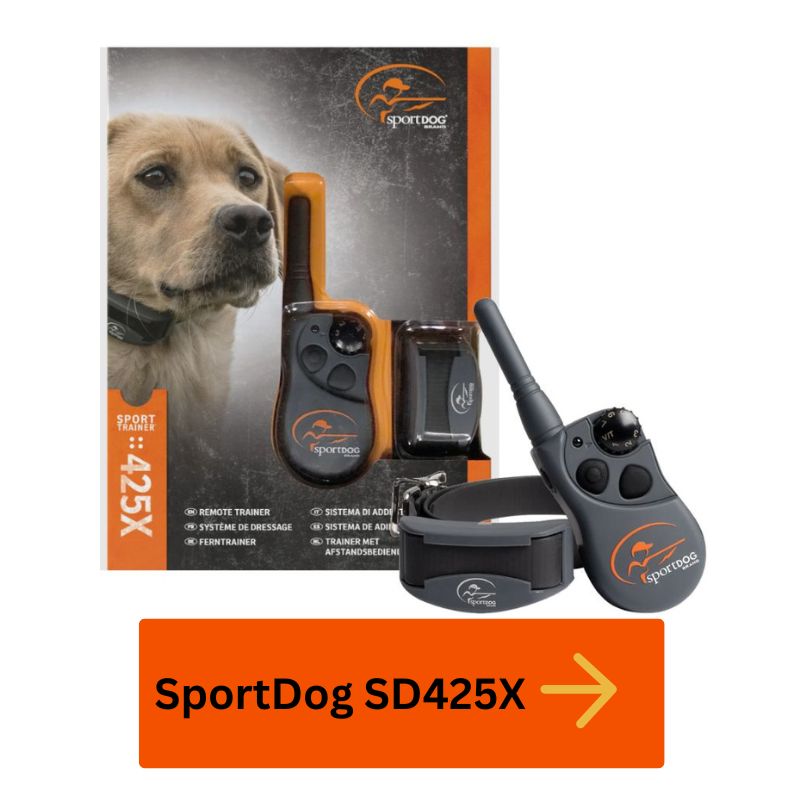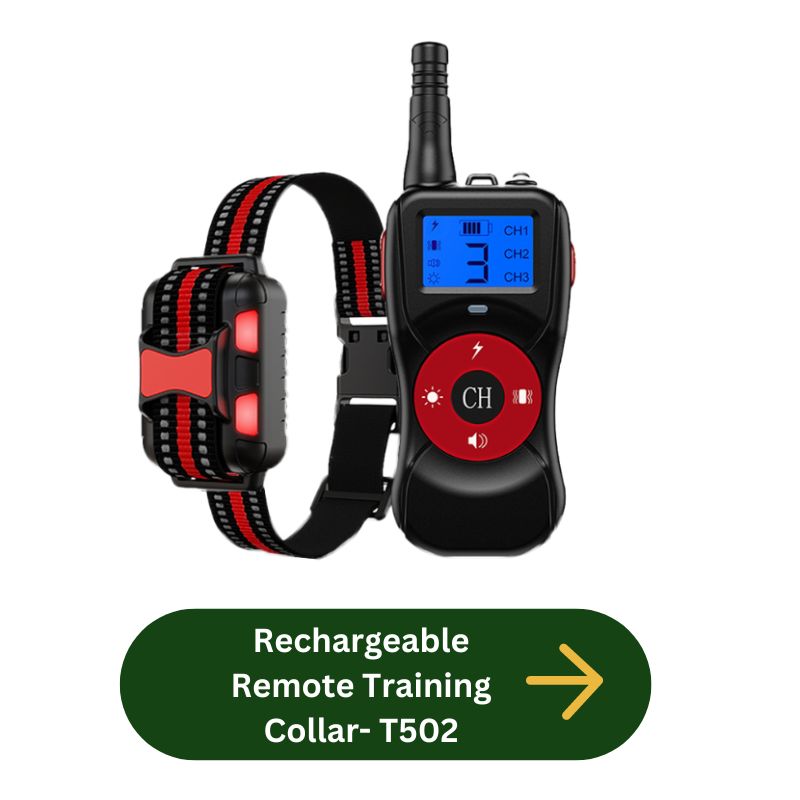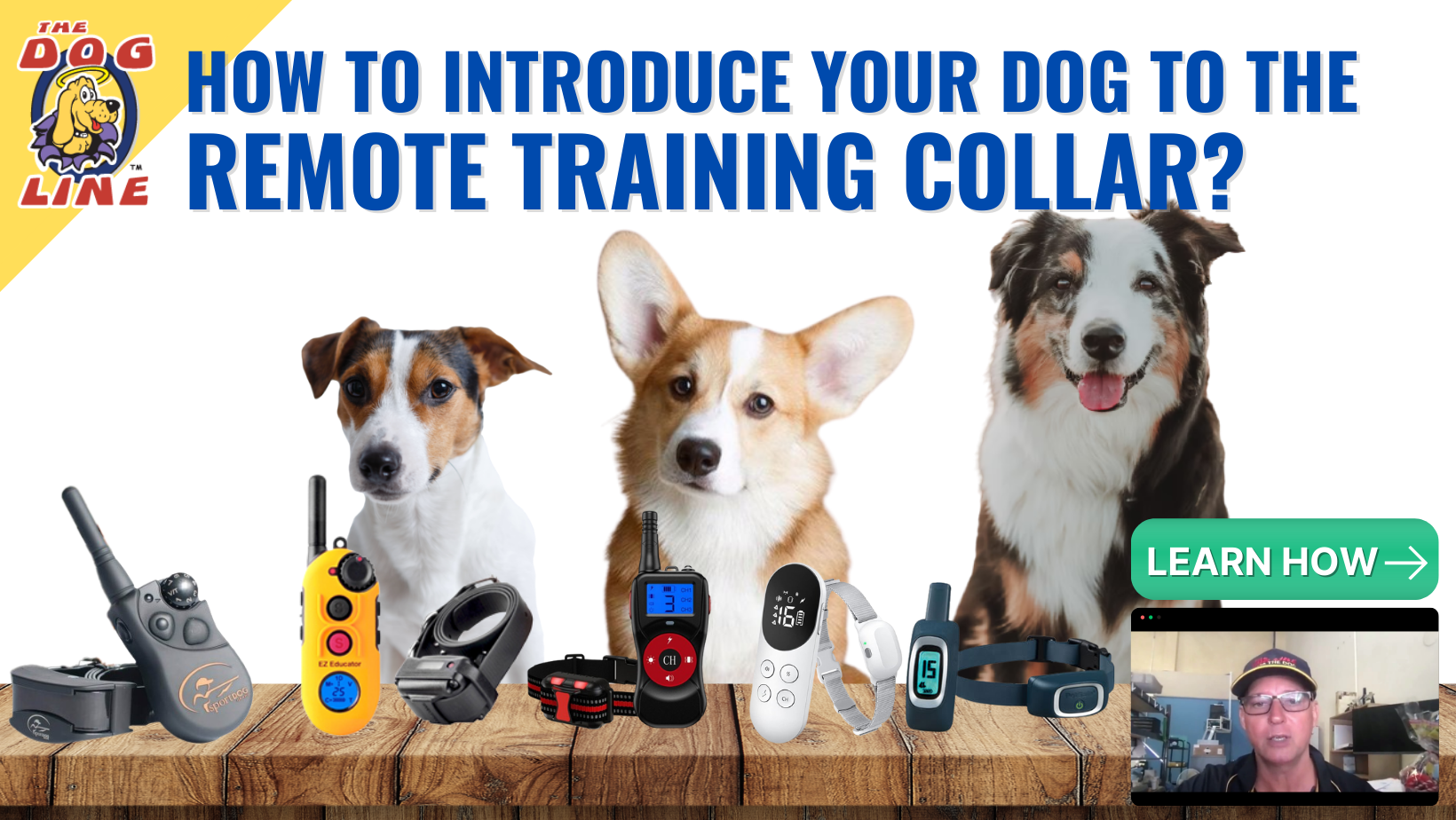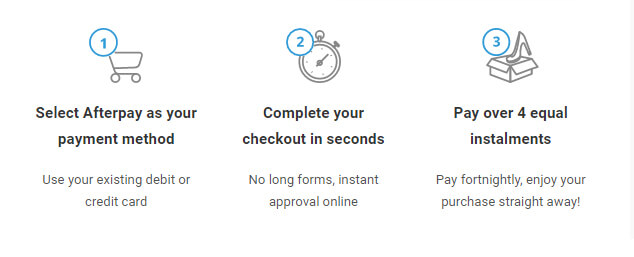SAME DAY SHIPPING!
Hurry offer expires in
What Level Should I Use For My Dog Training Collar?
Sorry... There is no hard and fast rule on this.
And it does not have to be about Static Correction at all. Once your training progresses then Static may not be needed.
As you progress with the training, you should see an improvement in not only overall obedience in other areas but the relationship with your dog should improve as well. Reducing the need of corrections.
What Level of Correction Should I use on My Dog Training Collar?
Facebook Live - Feb 21, 2023
Have you seen this video as well... How to introduce Dog Training Collar with your Dog?
It covers a few points like becoming 'Collar Aware'.
Here are few things to consider when thinking about How To Use a Dog Training Collar.
- When using an E collar, Be Guided by your dog's Reaction
- How Does a Dog Training Collar Work?
- What Level do you have the Collar is set to?
- What is your dog doing at the time of correction?
- Where is the collar positioned?
Note: If you are under the guidance of a Dog Trainer for E-Collar training then certainly consult with them and follow their guidance on How to Use a Dog Training Collar. The points below are taken from my personal experience with using and advising people on Remote Dog Training Collars.
Each dog is different, lives in a different place and reacts to different things. So, I trust this will help you make a decision on how YOU want to proceed with your dog training collar... Of course, you can always give us a call to tell us a bit about your dog - Ph: 1300 843 364
1. When Using an E Collar, Be guided by Your Dog's Reaction.
As time goes on you will notice that you are getting more and more opportunities to be the "Good Guy" and are now rewarding your dog more and more.
(So yes... An Electric Dog Training Collar is a great tool for 'Positive Reinforcement'...Go On...Disagree with Me!)
The fact is that with effective use your dog will respond to your commands/directions with less and less use of remote trainer.
Which means you are going to be rewarding your dog more. You are no longer doing all the Yelling and are now building a more positive relationship.
2. How Does a Dog Training Collar Work?
We go more into this in the video above and the three points we have listed will help you with how you can use the dog training collar. There are a lot of variables so start small and start slow.
Most good Quality Remote training collars come with a combination of options for getting your dog's attention. Sound, Vibration and Static Correction (Which is why they are sometimes incorrectly referred to as 'Electric Shock collars For Dogs'.
Quite often, particularly after training, you will see a marked improvement in the response from the dog even without the use of the remote.
Last week, we talked about your dog becoming 'Collar Aware' so hopefully your dog is not in a situation where they are responding to the fact that they have the collar on and are responding to your training and reward regime.
In my opinion, there seems to be an increase in reward opportunities for dogs with the effective use of a dog training collar.
Once you get your dog's attention, you can communicate effectively, then holding the attention is often the next challenge.
A dog that is just walking around sniffing the bush will not need as much attention getting correction (Tone, Vibration, Static) as a dog chasing a car or rabbit.
3. What level is the Collar set to?
The level on the screen or the dial is quite important, for your reference. However, the next 2 points come into play at the same time.
I like something that is easy and convenient to adjust the levels so you can make adjustments quickly and be guided by your dog’s reaction.
Some of the Remotes have a dial and some require buttons to be pushed to increase. They often all have a good range to select.
You will also see that some of them have the levels broken up in to a selection of numbers or a dial.
If a Remote goes up to 100 points or just 7 levels…
it often has little to do with one being higher than the other, it is just broken up in a different way. Note: if you have a super reactive dog may need to look at something in a ‘Stubborn Dog Range’ (for want of a better word).
Some Higher Level Remotes are:
-
ET-800 The Boss Educator Remote Dog Trainer
-
SportDOG Remote Training Collar–SD-1225X
-
SportDOG Remote Training Collar – SD-425X
-
EZ-900 Educator Remote Dog Trainer
The Size of the receiver Collar will also be a consideration if you are looking for Dog Training Collars for Small Dogs. You don’t want your dog to be uncomfortable wearing the collar and look like it is carrying around a Brick.
Here are few Dog Training Collars for Small dog's:
-
PetSafe 300m Lite Remote Trainer - PDT17-16025
-
PetSafe Lite 100m Remote Dog Trainer - PDT17-16031
-
ME-300 Micro Educator Remote Dog Training Collar
-
T200 - Rechargeable Dog Remote Training Collar
-
Rechargeable Remote Training Collar For Small Dogs - T502
4. What is your dog doing at the time?
You will learn to make a bit of a judgment call on this.
If you can see what your dog is up to, you can make a call on what level of ‘Drive’ or ‘Excitement’ your dog is experiencing. If it is high Drive then obviously it will take more to interrupt them
Experience will help you on this - but remember as well that once your dog learns the correct Indicators from you, breaking their focus will get easier as time goes on.
5. Where is the collar positioned?
This is another variable that you won't really know.
Imagine hitting your elbow… but then hitting the ‘Funny Bone’ in your elbow. Same Same… The position of the collar will play a part in what the dog will feel. So again, be guided by the dog’s reaction and start small.
As time goes on you will start to find a general level and as your dog learns the lower levels will often be sufficient.
Start Small at first we mention this in last weeks video ‘How to introduce a Dog Training Collar with Remote to your Dog'.
If you try this on yourself you will notice that each time you move the Dog Collar you will experience a different level/type of sensation – Your fingers may even start to twitch even though the Probes are touching your arm.
That’s how it works with a TENS Machine.
I am not saying that you will get to a point where you will not have to use the remote ever again. I never went to the park with my Boxer Dog and let her off the lead, Without having her remote.
It was my Back Up - My Communication Tool - And my Emergency Handbreak.
Best.
Colin
Transcription:
- 00:00:00,320 --> 00:00:01,920 Pushing the button at number 4,
- 00:00:01,920 --> 00:00:04,420 and the dog was not paying attention in certain times.
- 00:00:04,440 --> 00:00:05,940 Sometimes it worked, sometimes it didn't.
- 00:00:05,970 --> 00:00:08,740 It's not down to the collar.
- 00:00:08,770 --> 00:00:13,280 The collar was delivering the correct "stim" level that you chose.
- 00:00:13,290 --> 00:00:15,940 It's just down to "what the dogs are doing at the time?"
- 00:00:15,970 --> 00:00:20,940 So the crucial question was, "What level do you have the collar on?"
- 00:00:20,970 --> 00:00:24,100 "What is the dog doing at the time?"
- 00:00:24,120 --> 00:00:25,560 And "Where is the collar position?"
- 00:00:25,580 --> 00:00:29,880 Now, you hit the button and it worked at level 4, What were the dogs doing?
- 00:00:29,900 --> 00:00:34,360 If your dog's comfort zone is here
- 00:00:34,480 --> 00:00:38,240 and you push this level, and this is his excitement level,
- 00:00:38,270 --> 00:00:42,480 he's not really going to pay attention until he's quite trained to know what he's
- 00:00:42,510 --> 00:00:45,460 looking for because that might be enough to interrupt him.
- 00:00:45,490 --> 00:00:48,980 If it's a new training area, you're going to have to go
- 00:00:49,010 --> 00:00:55,100 with the collar and get it up above the dog's excitement or comfort level.
- 00:00:55,130 --> 00:00:59,100 And this all depends on what they are doing at the time.
- 00:00:59,130 --> 00:01:02,040 So if the dog has a high level of drive,
- 00:01:02,040 --> 00:01:04,490 you're going to have to increase the level of the collar.
- 00:01:04,520 --> 00:01:05,960 When you're introducing the collar
- 00:01:05,990 --> 00:01:11,570 to the dog, you commence using low-level stim to get the dog recognized.
- 00:01:11,600 --> 00:01:13,620 Then you can start introducing vibration.
- 00:01:13,640 --> 00:01:15,540 Quite often people are using these remotes
- 00:01:15,570 --> 00:01:19,820 on deaf dogs just to get their attention at the vibration level only.
- 00:01:19,850 --> 00:01:21,080 Position of the collar.
- 00:01:21,080 --> 00:01:24,210 You've got to remember that when you put these on, these are what's called a...
- 00:01:24,240 --> 00:01:25,800 It's a TENS machine for a dog,
- 00:01:25,830 --> 00:01:29,850 which stands for Transcutaneous Electronic Nerve Stimulation.
- 00:01:29,880 --> 00:01:32,260 So you're stimulating the nerve
- 00:01:32,290 --> 00:01:37,400 transcutaneous through the skin in order to get the muscle to get a tingle.
- 00:01:37,430 --> 00:01:39,280 Now, if you touch one of these probes
- 00:01:39,280 --> 00:01:41,980 on the dog collar and you push the button, nothing will happen.
- 00:01:42,010 --> 00:01:45,820 If you touch two, it will actually do the connection.
- 00:01:45,850 --> 00:01:49,780 If you lined up 20 school kids and then one put one
- 00:01:49,800 --> 00:01:52,720 finger on the one probe and then the last one put the other finger
- 00:01:52,720 --> 00:01:55,520 on the other probe, they would feel it because it would travel through them.
- 00:01:55,550 --> 00:01:57,850 You create that connection.
- 00:01:57,880 --> 00:02:00,160 Now, what's happening is it's a localized stimulation.
- 00:02:00,190 --> 00:02:04,640 So it's same as going to a physiotherapist and they put a probe on this part
- 00:02:04,640 --> 00:02:08,220 of the muscle and a probe on that part of the muscle and they run their tens
- 00:02:08,250 --> 00:02:12,780 machine through the muscle to give you that tingling sensation.
- 00:02:12,800 --> 00:02:14,780 So that's exactly what's happening with the dog.
- 00:02:14,810 --> 00:02:19,240 Now, if you move that tensile machine from the physiotherapist onto a different
- 00:02:19,270 --> 00:02:21,920 part of the muscle and it's now touching some, .
- 00:02:21,950 --> 00:02:26,450 maybe it's touching a nerve or there's more sensitive part of the arm,
- 00:02:26,480 --> 00:02:29,940 you're going to feel it differently, even though you haven't adjusted the dial.
- 00:02:29,970 --> 00:02:31,060 Same with the dog.
- 00:02:31,090 --> 00:02:33,660 If you find that you've got the collar
- 00:02:33,690 --> 00:02:37,730 on the dog's neck and it is touching a muscle, then
- 00:02:37,760 --> 00:02:40,480 it will feel different as if it's touching somewhere else.
- 00:02:40,480 --> 00:02:43,200 So you've got to be aware that when you push the button,
- 00:02:43,200 --> 00:02:46,160 you are going to have to take into consideration all of these variables.
- 00:02:46,190 --> 00:02:48,220 What level do you have the collar on?
- 00:02:48,250 --> 00:02:51,180 What is the dog doing at the time?
- 00:02:51,210 --> 00:02:52,880 And where is the collar position?
- 00:02:52,900 --> 00:02:54,900 Now, you don't know that third variable.
- 00:02:54,930 --> 00:03:00,220 So what you have to do is be guided by the dog's reaction.
- 00:03:00,250 --> 00:03:03,740 So you would start at a lower level of correction on the collar,
- 00:03:03,770 --> 00:03:07,640 and then what you would do is monitor how the dog reacted.
- 00:03:07,640 --> 00:03:10,520 Now, just be aware as well, if the dog's a fair distance away
- 00:03:10,550 --> 00:03:14,780 and you've got a collar on the dog and you push
- 00:03:14,810 --> 00:03:19,160 the button, the radio signal, you'll push the button and you
- 00:03:19,170 --> 00:03:23,320 might give them a s nick on some collars, which is just a short, sharp little pling,
- 00:03:23,350 --> 00:03:26,260 or you might give them an extended correction.
- 00:03:26,280 --> 00:03:27,440 But just be aware that if you push
- 00:03:27,470 --> 00:03:32,140 the button and then there's a radio signal going through the air to the dog,
- 00:03:32,170 --> 00:03:36,140 it might take time to get to the dog and correct the dog.
- 00:03:36,170 --> 00:03:38,780 If you push the button and the dog doesn't
- 00:03:38,810 --> 00:03:41,200 respond, there might be a correction on the way.
- 00:03:41,230 --> 00:03:45,610 You don't want to push the button until you're sure that the timing has happened.
- 00:03:45,640 --> 00:03:48,700 Now, that thing varies on the quality of the remote.
- 00:03:48,720 --> 00:03:51,100 Also the distance, you might find that the longer distance
- 00:03:51,130 --> 00:03:54,180 remotes give you a little bit of a faster response time.
- 00:03:54,210 --> 00:03:56,240 So just keep that in mind.
- 00:03:56,270 --> 00:03:59,000 You don't want to be going zip zip and then up.
- 00:03:59,000 --> 00:03:59,940 The dog is not reacting,
- 00:03:59,970 --> 00:04:03,610 turn it up two levels, then you go zip zip real quick and then
- 00:04:03,640 --> 00:04:08,020 you get the first reaction and there's another two higher levels coming along.
- 00:04:08,040 --> 00:04:09,480 So that's not going to be a good thing.
- 00:04:09,510 --> 00:04:12,140 So after you've tried
- 00:04:12,170 --> 00:04:15,280 the collar on yourself and you've seen what it's like,
- 00:04:15,310 --> 00:04:18,740 what response you get, you can put it on the dog and start seeing
- 00:04:18,770 --> 00:04:22,460 and monitoring what levels are appropriate under what circumstances.
- 00:04:22,480 --> 00:04:24,720 So just remember those three things.
- 00:04:24,750 --> 00:04:27,060 What is the dog doing at the time?
- 00:04:27,090 --> 00:04:29,540 What level do you have the collar on,
- 00:04:29,570 --> 00:04:33,560 and just be aware that the position of the collar will alter the dog's reaction.
- 00:04:33,590 --> 00:04:37,460 So really you're being guided by the dog's reaction.
- 00:04:37,480 --> 00:04:40,480 We'll talk further about these, but if you'd like to chat to one of our
- 00:04:40,510 --> 00:04:46,000 dog trainers, maybe book in a consultation or chat over the phone.
- 00:04:46,030 --> 00:04:50,120 They can give you some advice, and we're always happy to advise as well.
- 00:04:50,150 --> 00:04:53,420 So jump on to the website, www. The dogline.
- 00:04:53,440 --> 00:04:54,740 Com. Au.
- 00:04:54,770 --> 00:04:58,680 Just remember, look around for a decent quality remote trainer because you want
- 00:04:58,710 --> 00:05:01,180 to make sure you get the results you're after.
- 00:05:01,210 --> 00:05:03,320 Okay, folks, thanks very much for chatting.
- 00:05:03,320 --> 00:05:04,520 We will see you again soon.
 The Dogline
The Dogline












